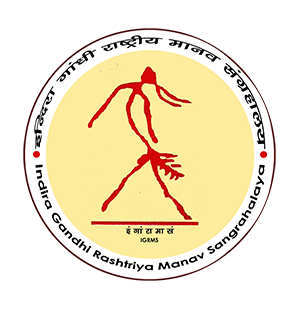कच्छ की खावडा कुम्भ्कारी
क्षेत्रः उत्तरी कच्छ
राज्यः राजस्थान
खावड़ा कुम्भकारी उत्तरी कच्छ, खावड़ा की एक प्राचीन कुम्हारी कला है जो हड़प्पा सभ्यता के लोगों द्वारा उपयोग में लाये जाने के लिए जानी जाती है एवं साथ ही जो सदियों से विरासत में चली आ रही है ।मृदभांड बनाने की प्रक्रिया के दौरान पुरुषों एवं महिलाओं के बीच दायित्व सौंप दिए जाते हैं। पुरुष जहाँ इस प्रक्रिया में क्षेपण कार्य देखते हैं तो वहीँ महिलाएं पात्रों की साज- सज्जा एवं चित्रकारी करती हैं। कुम्भकर एक विशेष स्थान (झील) के पास से मिटटी प्राप्त करते हैं जिसे रनकामिट्टी कहा जाता है। यह मृदु मृदा चाक पर पात्र का रूप धारण करती है एवं फिर इसे छाया में सुखाने के लिए छोड़ दिया जाता है ।इसके बाद महिलाएं मिट्टी के संयोग से बने लाल, काला एवं सफ़ेद रंग से प्रत्येक पात्र को समुदाय विशेष की कलाकृतियों से सजाने का कार्य करती हैं। कुछ समय के बाद इन्हें साफ कर धूप में सुखाने के पश्चात् आसानी से प्राप्त होने वाले स्थानीय सूखी लकड़ियाँ एवं उपलों के माध्यम से जलाई जाने वाली अग्नि की भट्टी में पकाया जाता है। बर्तनों पर गेरू (लाल रंग) की एक छोटी परत चढाई जाती है। खावडा के पात्र गेरू से लालिमा प्राप्त करते हैं जो एक प्रकार की मिट्टी (उचर/अम्बर) है इसके साथ काले एवं सफ़ेद रंग की बिंदियाँ एवं लाइने भी प्राकृतिक रंगों से बनाई जाती हैं। पूर्ण रूप से तैयार पात्रों को अन्दर की ओर से ढलाई कर सुखाने रख दिया जाता है। खावडा के टेराकोटा पात्र अन्य से अलग स्थान रखते हैं क्योंकि इनकी चित्रकारी एवं पात्रों को तैयार करने की प्रक्रिया के प्रत्येक स्तर पर बार बार की सफाई से प्राप्त रूप अपने में अनूठे होते हैं। प्राकृतिक रंगों से तैयार जटिल फुलकारी एवं ज्यामितीय आकृतियाँ कच्छ कुम्भ्कारी को अनोखा रूप प्रदान करती हैं ।
KHAVDA POTTERY OF KUTCH
Area: North Kutch
State: Gujarat
‘Khavda’ pottery is an art form of Khavda, North Kutch. Pottery is an ancient art known to be practiced by people of the Harappan Civilisation, and this legacy of pottery has passed down for centuries. Duties are assigned and distributed amongst men and women throughout the process of pottery-making. Men do the throwing in of terracotta and women carry out the task of decoration and painting of the pots. The potter gets mud from a specific (a lake) area near the village. It is called ‘Rannkamitti’. This soft clay is shaped into a pot on a potter’s wheel and left to dry in shade, then Kumbhar women use red, black, and white clay-based paints to decorate each piece of pottery with distinct community-specific designs. After a while, it is cleaned and put in the sun to dry and then baked in a furnace, powered by simple and locally available fuels of dry wood and cow dung. The vessels are coated with a thin wash of geru (red color). The pots of Khavda get their red color from Geru, a type of soil (ochre/ umber), and the black and white dots and stripes are also made with natural material. Finished pieces are cast aside, ready for drying. The terracotta pots of Khavda are distinctive from the ones we may see elsewhere, because of their painting and form which is a result of repeated cleaning at every stage of the process of their making. The highlight of Kutch pottery is the intricate floral and geometric designs with natural pigment color combination.



